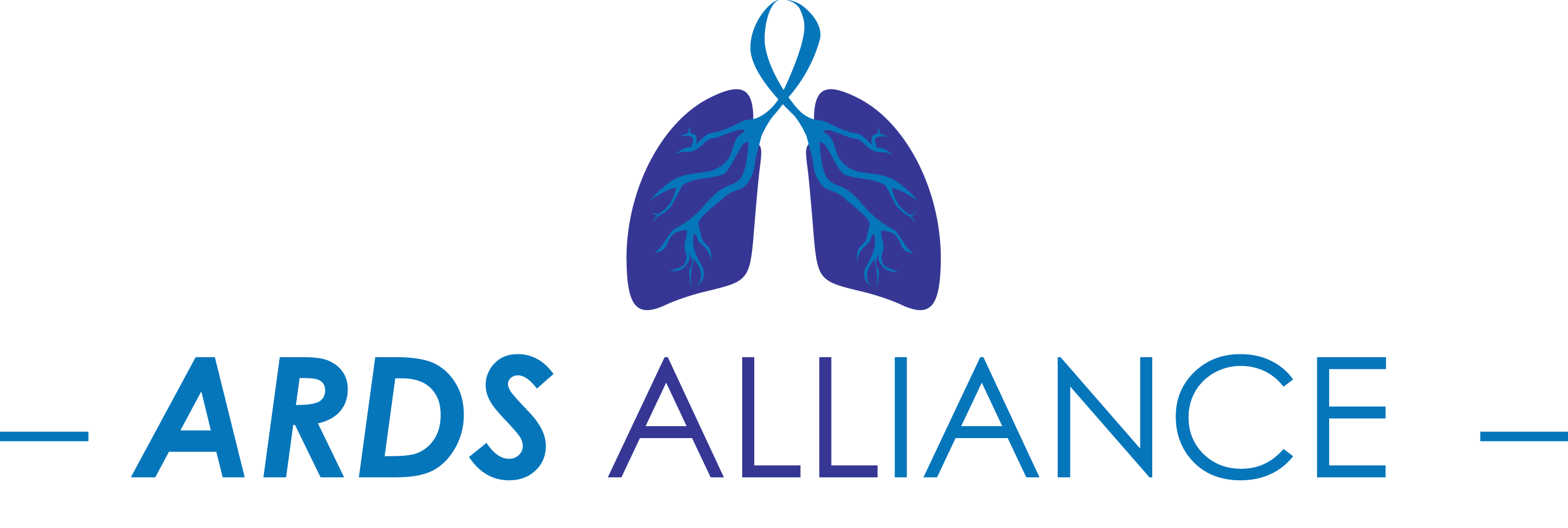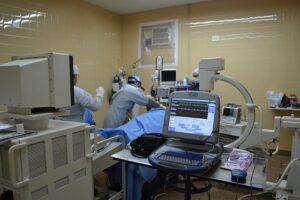The Role of Oxygen Therapy in ICU ARDS Treatment
The Role of Oxygen Therapy in ICU ARDS Treatment
Acute Respiratory Distress Syndrome (ARDS) is a life-threatening condition characterized by rapid-onset respiratory failure, often caused by trauma, pneumonia, sepsis, or inhalation injuries. For patients suffering from ARDS, oxygen therapy plays a crucial role in ICU treatment, providing the necessary support for gas exchange and oxygenation. Understanding how oxygen therapy works, its components, methods, and associated challenges can alleviate some of the anxieties surrounding this complex condition. This article delves into the various aspects of oxygen therapy in the context of ARDS treatment, elucidating its significance in Intensive Care Units (ICUs).
Understanding ARDS: A Brief Overview
ARDS is defined by an acute inflammatory process in the lung that leads to increased permeability of the alveolar-capillary membrane. This condition results in pulmonary edema and impaired gas exchange, leading to relatively low arterial oxygen levels (hypoxemia). Patients with ARDS often find themselves struggling to breathe, resulting in increased respiratory effort and fatigue. The initial management of ARDS focuses on addressing the underlying cause, while supporting the respiratory system through various means, including oxygen therapy.
ARDS is generally classified into three categories based on the severity of hypoxemia:
- Mild ARDS: PaO2/FiO2 ratio ≥ 200 mmHg and < 300 mmHg
- Moderate ARDS: PaO2/FiO2 ratio ≥ 100 mmHg and < 200 mmHg
- Severe ARDS: PaO2/FiO2 ratio < 100 mmHg
The understanding of ARDS is vital to approach treatment effectively, including oxygen therapy. The need for supplemental oxygen is a cornerstone in managing this life-threatening condition.
The Role of Oxygen in ARDS Treatment
Oxygen therapy aims to maintain adequate oxygenation in patients suffering from ARDS, which is crucial for preventing further organ damage and supporting overall metabolic needs. When the lungs are compromised, the primary challenge lies in delivering adequate oxygen to the blood while minimizing potential harm from excessive oxygen levels, which can lead to hyperoxia.
The goals of oxygen therapy in ARDS management include:
- Correcting hypoxemia
- Supporting lung rest
- Reducing ventilatory workload
- Improving overall oxygen delivery to vital organs
Given these objectives, oxygen therapy is an essential component of ARDS management protocols in the ICU. Understanding the different methods and their implications is key to effective treatment.
Methods of Oxygen Therapy
Oxygen therapy can be administered through various methods, each with distinct advantages and disadvantages depending on the severity of ARDS and the patient’s specific needs.
1. Nasal Cannula
Nasal cannulas are small, flexible plastic tubes inserted into the nostrils that provide supplemental oxygen at low flow rates (1-6 L/min). This method is typically used for patients with mild ARDS where oxygen demands are not excessively high. Nasal cannulas are well-tolerated and allow for speaking and eating while receiving oxygen.
- Advantages: Comfort, portability, ability to eat and talk
- Disadvantages: Limited efficacy in severe hypoxemia, potential for dryness and mucosal irritation
2. Simple Face Mask
A simple face mask provides a higher concentration of oxygen (6-10 L/min) than nasal cannulas and is appropriate for patients requiring moderate support. It covers the nose and mouth, creating a seal that allows for higher oxygen concentration delivery.
- Advantages: Increased oxygen delivery, better suited for moderate hypoxemia
- Disadvantages: Can be uncomfortable, limits patient interaction and mobility
3. Non-Rebreather Mask
A non-rebreather mask is designed to deliver high concentrations of oxygen (10-15 L/min) and is best for patients experiencing significant respiratory distress. It features a reservoir bag that allows the patient to inhale almost pure oxygen while minimizing exhaled air dilution.
- Advantages: High oxygen concentration, effective in treating severe hypoxemia
- Disadvantages: Risk of suffocation, as the mask can restrict airflow if not used correctly
4. High-Flow Nasal Cannula (HFNC)
The high-flow nasal cannula is an advanced oxygen delivery system that can provide heated and humidified air at high flow rates (up to 60 L/min). This method has gained popularity in the management of ARDS as it combines CPAP capabilities with oxygen delivery, ultimately improving oxygenation and reducing respiratory effort.
- Advantages: Increases patient comfort and tolerance, provides positive pressure, and improves lung recruitment
- Disadvantages: Requires monitoring for effectiveness; not universally available in all ICUs
5. Mechanical Ventilation
In cases of severe ARDS, mechanical ventilation may be necessary to support the patient’s respiratory function. Various ventilation strategies, including low tidal volume ventilation and protective lung strategies, aim to minimize lung injury while maintaining optimal oxygenation.
- Advantages: Controlled oxygen and pressure delivery, allows for sedation and rest
- Disadvantages: Associated risks such as ventilator-induced lung injury, infections, and prolonged sedation
The Importance of Monitoring and Adjusting Oxygen Therapy
Administering oxygen is just one part of the equation; continuous monitoring and adjusting are essential to optimize oxygen delivery and prevent complications. Clinicians often use a combination of pulse oximetry and arterial blood gas (ABG) analysis to assess oxygenation status and make necessary adjustments.
- Regular assessment of arterial blood gases (ABGs) to evaluate PaO2 levels
- Monitoring pulse oximetry (SpO2) to ensure adequate oxygen saturation (ideally 92% or higher in ARDS patients)
- Adjusting oxygen levels based on clinical assessment, patient comfort, and response to therapy
Potential Complications of Oxygen Therapy
While oxygen therapy is beneficial, it’s vital to consider potential complications associated with its use, especially in critically ill patients. Hyperoxia is one such concern; excessive oxygen levels may lead to oxidative stress, causing further lung injury. The following complications can arise from inappropriate oxygen therapy:
- Oxygen toxicity, leading to pulmonary edema and atelectasis due to high oxygen concentrations
- Barotrauma or volutrauma from mechanical ventilation methods if not properly managed
- Increased production of reactive oxygen species, contributing to cellular injury
Therefore, clinicians must balance providing adequate oxygen while minimizing these potential risks. Individualizing treatment approaches based on the patient’s response is crucial for optimal outcomes.
Frequently Asked Questions (FAQs)
1. What is the primary goal of oxygen therapy in ARDS?
The primary goal of oxygen therapy in ARDS is to correct hypoxemia, ensuring that adequate oxygenation is maintained to prevent further organ damage and support overall metabolic needs.
2. Can oxygen therapy alone treat ARDS?
Oxygen therapy is an important component of ARDS management but must be part of a comprehensive treatment approach that includes addressing the underlying cause, mechanical ventilation if necessary, and supportive care.
3. How is the effectiveness of oxygen therapy monitored?
The effectiveness of oxygen therapy is monitored using pulse oximetry (SpO2) and periodically assessing arterial blood gas levels (PaO2) to ensure adequate oxygenation is maintained.
4. Are there risks associated with high-flow oxygen therapy?
While high-flow oxygen therapy can improve oxygenation, it includes risks such as potential oxygen toxicity and complications related to mechanical ventilation if required in severe cases.
5. What are the indicators for mechanical ventilation in ARDS patients?
Mechanical ventilation may be indicated when a patient exhibits signs of severe respiratory distress, persistent hypoxemia despite maximal oxygen therapy, or inability to maintain adequate ventilation.
Conclusion
The role of oxygen therapy in treating ARDS is crucial and multi-faceted. By providing adequate oxygenation, addressing respiratory distress, and using various modes of delivery based on the severity of the patient’s condition, healthcare providers can improve outcomes for those afflicted by this life-threatening syndrome.
As ARDS remains a complex and often overwhelming condition for patients and their families, understanding the mechanisms and importance of oxygen therapy can ease some of the anxiety surrounding this illness. Proper management and timely intervention lead to improved recovery chances and better quality of life for those impacted. If you or a loved one are facing the challenges of ARDS and oxygen therapy, remember that support is available, and continuous education about the treatment journey is key.
References
About ARDS and Post-ARDS
ARDS (Acute Respiratory Distress Syndrome) is a life-threatening condition typically treated in an Intensive Care Unit (ICU). While ARDS itself is addressed during the ICU stay, recovery doesn’t end with discharge; patients then embark on a journey of healing from the effects of having had ARDS.
Disclaimer
The information provided in ARDS Alliance articles is for general informational and educational purposes only and is not a substitute for professional medical advice, diagnosis, or treatment. While we strive to present accurate, current information, the field of Acute Respiratory Distress Syndrome (ARDS) and related healthcare practices evolve rapidly, and ARDS Alliance makes no guarantee regarding the completeness, reliability, or suitability of the content.
Always seek the advice of qualified healthcare professionals with any questions you may have regarding a medical condition. Never disregard professional medical advice or delay seeking it because of information you read in ARDS Alliance articles. ARDS Alliance, its authors, contributors, and partners are not liable for any decision made or action taken based on the information provided in these articles.
About ARDS Alliance
Our mission is to improve the quality of life for ALL those affected by ARDS.
The ARDS Alliance is a non-profit committed to raising awareness and enhancing the understanding of Acute Respiratory Distress Syndrome (ARDS), a severe lung condition often occurring in critically ill patients. Through developing alliances, it unites various organizations and experts striving to improve care and support research aimed at finding more effective treatments. Their efforts include educating the public and healthcare providers about ARDS symptoms, risk factors, and advancements in treatment, ensuring better patient outcomes and resource availability.

I believe that raising awareness about Acute Respiratory Distress Syndrome is crucial in improving patient outcomes. Our organization works tirelessly to educate the public about the signs and symptoms of ARDS, and provide support to those affected by this life-threatening condition. Together, we can make a difference in the fight against ARDS.
~ Paula Blonski
President, ARDS Alliance





